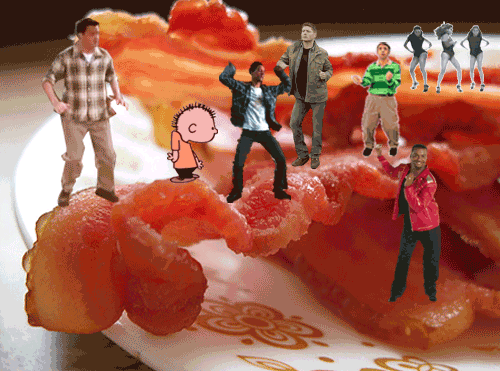by Vincenzo Marino – translated by Roberta Aiello
How to check non-news?

One of the most discussed issues of the last few weeks (we have already talked about here and here) is the ‘viral’ content created by newsrooms. The widespread debate has emerged after the birth and rise of a large group of viral oriented websites (Upworthy and Viralnova among others), with the reorganization of traditional media through specific web friendly platforms, the spread of uncontrolled hoaxes and the ‘hybridization’ of platforms like BuzzFeed in transition towards traditional journalism. This ambiguity between professional and online divertissement is the basis of the recent discussion. Ravi Somayia of the New York Times tries to define the porous boundary between the two. According to the writer, we can speak of “journalism” when the truth animates the completion and the sharing of an article, but to become viral the truth of the content does not seem to be essential. This is the case of BuzzFeed and the tweets of the ABC producer Elan Gale about a fake feud on a plane which was accepted as true and published, without checking, in a viral post on the website of Peretti and Smith.
This is just one of several incidents that have happened in the last few months which seem to put all the blame on the news outlet that did not verify the news. It represents a more serious sin for those who are trying to emancipate with their own global newsroom. In a consumer cultural market in which journalism – according to Joshua Benton of NiemanLab – “is an act of pointing” readers towards what to read, the choice of what to publish, with or without verification, becomes an essential discriminating factor. “I really have an issue with the word hoax”, Gale says, defending himself. “I was broadcasting to my followers who know what I do”, referring to his job as satirical writer and the certainty that his audience would have understood a comic gag, a piece of information with no need to be confirmed. The issue is also discussed by Felix Salmon of Reuters.com in a post that perfectly sums up the problem in the title “Can you fact-check a twerking video?“. Salmon gets to the point: what is usually published on the web and on social networks is not shared because of its “truth” and very often imposes – as Nathan Zimmerman, the “viral specialist” of Gawker, adds – a “certain suspension of disbelief “. It is a real”gap”, where the news barely gets, being less ‘attractive’ – and therefore less sharable – than a photo or a funny video. The problem is that online newspapers are beginning to invest in this gap to fill it.
The viral rib

In this race for attention, those who are trying to work in the digital media industry can easily slip into a hybrid territory between what the Internet culture would like to be news (a video of a terrifying twerking, for example, that became the subject of many articles) and classic agenda-setting, which can hardly apply its methods of checking to such content (actually, the video in question was checked). Salmon, however, believes that the debate is just beginning, and that it will be one of the most discussed topics in 2014. On the other hand – the writer continues – it becomes clear how necessary it is to rely on viral content to survive the online news war, so as to bring old newspapers like the Washington Post to build “its own” BuzzFeed (KnowMore) creating a “social-friendly” rib with original and potentially viral content, often invoking the articles produced by the head newspaper.
This week, The Daily Mirror launches the Ampp3d project, a collateral website inspired by examples such as BuzzFeed and Quartz specializing in highly-sharable content with a simple and mobile layout, social orientation, web friendly titles and simplified reading through the use of statistics and figures. The website, directed by the former Guardian journalist Martin Belam, is an evolution of UsVsTh3m. It reached, only in the month of November 2013 (about six months after launch), 7 million unique visitors. The aim is to bring to Ampp3d what has been learned from Quartz, Belam explains to Justin Ellis of NJL, and not just from the point of view of the form. Months of work experience provided the newsroom with tests and data in order to understand what works and what does not on social networks (more on Facebook as the main source of traffic, less on Twitter defined as buzz-generator). It is reasonable to expect other products such as tests and quizzes (as the famous North-o-meter with millions of likes), 8-bit video games, but also “something else” Belam assures.
Facebook wants to be your newspaper
 Given their nature and the reasons for which they are designed, the websites mainly oriented to share content vaguely recall the “handmade” creation of many different “social” portals, or at least an editorial anteroom between social networks and classic news (about the reliance on Facebook by digital publications we have already discussed here). In the aforementioned article by Felix Salmon, there is a reference to the scheme of the “Valley of ambiguity“. One of the other news items of the week is the change in the Facebook algorithms that, in order to comply with the scheme of Analee Newitz, should penalize the “light” content on the left-hand side of the page. In an article written by Mike Isaac of AllThingsDigital it is understood that, according to anonymous sources, Mark Zuckerberg and Chris Cox (vice president of Product) intend to use users’ news feeds for a sort of “newspaper” with “high quality”content. It would be a part of a daily ritual to emphasize what users should see and not what is popular at the time, on the basis of unclear mechanisms (“Who defines what’s high quality content?”, asks Mathew Ingram of Gigaom).
Given their nature and the reasons for which they are designed, the websites mainly oriented to share content vaguely recall the “handmade” creation of many different “social” portals, or at least an editorial anteroom between social networks and classic news (about the reliance on Facebook by digital publications we have already discussed here). In the aforementioned article by Felix Salmon, there is a reference to the scheme of the “Valley of ambiguity“. One of the other news items of the week is the change in the Facebook algorithms that, in order to comply with the scheme of Analee Newitz, should penalize the “light” content on the left-hand side of the page. In an article written by Mike Isaac of AllThingsDigital it is understood that, according to anonymous sources, Mark Zuckerberg and Chris Cox (vice president of Product) intend to use users’ news feeds for a sort of “newspaper” with “high quality”content. It would be a part of a daily ritual to emphasize what users should see and not what is popular at the time, on the basis of unclear mechanisms (“Who defines what’s high quality content?”, asks Mathew Ingram of Gigaom).
We are generally accustomed to think of Facebook as a platform for sharing status, photos, news, funny content and pictures without any pretense of quality. This sort of ‘program’ called “Reader” would rather reverse users’ feeds providing an experience similar to Flipboard, the software for tablets that selects the news of social circles and presents them in a readable way (according to Isaac, Facebook declined to comment on any of these operations). What is certain is that “Chris and Mark absolutely do not want Facebook to be Tumblr”, in other words a social blogging platform with chronological home feed, not particularly attractive to advertisers and with content of any kind. Maybe this is the reason why Facebook doesn’t support GIFs, Isaac explains.
The young read like their grandparents
 News preferences of the so-called millennials, the generation of those who grew up with the Internet, are not so different from those of their parents or grandparents, although they read on mobile devices. This is what emerges from a study conducted by the Pew Research Center. Young people still prefer textual articles, paginated in columns in the old-fashioned way, over multimedia products. 60% of millennials surveyed prefer a “print-like experience” on their own tablets and smartphones, a trend more or less uniform among the various categories, including those who are over 40. It is a surprising fact, if we consider that for years – as recalled by Derek Thompson of The Atlantic – in the eyes of editors, journalists and advertisers the so-called “Generation Y” was to be considered as a sort of separate species, a product of the Internet culture which reasoned and consumed in a very particular way.
News preferences of the so-called millennials, the generation of those who grew up with the Internet, are not so different from those of their parents or grandparents, although they read on mobile devices. This is what emerges from a study conducted by the Pew Research Center. Young people still prefer textual articles, paginated in columns in the old-fashioned way, over multimedia products. 60% of millennials surveyed prefer a “print-like experience” on their own tablets and smartphones, a trend more or less uniform among the various categories, including those who are over 40. It is a surprising fact, if we consider that for years – as recalled by Derek Thompson of The Atlantic – in the eyes of editors, journalists and advertisers the so-called “Generation Y” was to be considered as a sort of separate species, a product of the Internet culture which reasoned and consumed in a very particular way.
Hence the need to invent journalistic and advertising products which could be adapted to this new type of audience. From this point of view, the study raises optimism among advertisers: young people in the age group between 18 and 29 would be much more willing to interact with the ads on a tablet (not on smartphones, where size still makes it a challenge) for the 29% of surveyed, compared with 12% of the 30-49 years segment and 7% of the 50-64. Meanwhile, Sam Kirkland of Poynter wonders if this obsessive research on mobile and mobile friendly platforms (and content) does not end up frustrating the good old desktop users. “I do most of my web browsing on a computer, with keyboard, mouse, and no multi-touch display”, Kirkland affirms. In this goldrush towards the mobile – asks Kirkland, citing examples such as the new websites of NPR and Wire – don’t we risk speeding away too quickly and hence losing those who use Internet browsers?


